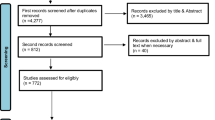Abstract
According to the initial vision of “digital earth” (DE), the public should constitute a significant proportion of its users. However, to date, most of the studies and applications have focused on science, the private sector and government. A DE-supported online oceanic educational public service and popularization system, iOcean, is studied. First, the vision for the public’s engagement with “digital ocean” is described: an analysis is presented from four aspects, i.e., the space dimension, the time dimension, the state dimension and its relationship with human beings. Second, the technical framework of iOcean is discussed, including data updating and model computing, the data, the function, and the application layers. Third, two key technologies are studied in detail that will enable the construction of iOcean. More than half a million public viewers have used the current version’swebsite. Practical demonstrations show that iOcean can bring virtual oceans to web browsers and desktops and construct a bridge between government departments and the general public.
Similar content being viewed by others
References
Alessandro Annoni, Craglia Max, Ehlers M, et al. 2011. A European perspective on digital earth. International Journal of Digital Earth, 4(4): 271–284
Chen Shupeng, Genderen J. 2008. Digital Earth in support of global change research. International Journal of Digital Earth, 1(1): 43–65
Chen Aijun, Leptoukh G, Kempler S, et al. 2009. Visualization of A-Train vertical profiles using GoogleEarth. Computers & Geosciences, 35(2): 419–427
Goodchild M F. 2008. The use cases of digital earth. International Journal of Digital Earth, 1(1): 31–42
Gore Al. 1998. The digital earth: understanding our planet in the 21st Century [EB/OL]. http://portal.opengeospatial.org/files/?artifact_id=6210/2010-07-14
Guo Huadong, Fan Xiangtao, Wang Changlin. 2009. A digital earth prototype system: DEPS/CAS. International Journal of Digital Earth, 2(1): 3–15
Guo Huadong, Liu Zhen, Zhu Lanwei. 2010. Digital earth: decadal experiences and some thoughts. International Journal of Digital Earth, 3(1): 31–46
Hou Wenfeng. 1999. Tentative idea for development of “Digital Ocean”. Aviso of Ocean, 18(6): 1–10
Patrikalakis N M, Bellingham J G, Mihanetzis K P. 2000. The digital ocean. Proceeding of computer graphics international onference. Geneva, Switzerland: Computer Graphics Znternational, 45–53
Su Fenzhen, Du Yunyan, Pei Xiangbin. 2006. Constructing digital sea of China with the datum of coastal line. Geo-Information Science, 8(1): 12–15
Su Fenzhen, Yang Xiaomei, Xu Jun. 2006. Basic theory and key technologies for marine geographic information system. Acta Oceanologica Sinica, 25(2): 80–86
Su Fenzhen, Zhou Chenghu, Zhang Tianyu. 2006. Constructing a raster-based spatial-temporal hierarchical data model for marine fisheries application. Acta Oceanologica Sinica, 25(1): 57–63
Wright D J, Blongewicz MJ, Halpin P N, et al. 2007. Arcmarine: GIS for a blue planet. Redlands, USA: ESRI Press
Wright T E, Burton M, Pyle D M, et al. 2010. Visualising volcanic gas plumes with virtual globes. Computers & Geosciences, 35(3): 1837–1842
Yang Chaowei, Michael Goodchild, Huang Qunying, et al. 2011. Spatial cloud computing: how can the geospatial sciences use and help shape cloud computing?. International Journal of Digital Earth, 4(4): 305–329
Yasuko Y, Yanaka H, Suzuki K, et al. 2010. Visualization of geoscience data on GoogleEarth: development of a data converter system for seismictomographic models. Computers & Geosciences, 36(2): 373–382
Zhang Xin, Dong Wen, Li Sihai, et al. 2011. China digital ocean prototype system. International Journal of Digital Earth, 4(3): 211–222
Author information
Authors and Affiliations
Corresponding author
Additional information
Foundation item: The National Natural Science Foundation of China under contract No. 61074132; the 908 Project of the State Oceanic Administration, China under contract No. 908-03-03-02; the Special Research Project for the Commonweal of the Ministry of Weater Resources of China under contract No. 201201092.
Rights and permissions
About this article
Cite this article
Zhang, X., Dong, W., Jiang, X. et al. “Digital earth” in support of an online oceanic educational public service and popularization. Acta Oceanol. Sin. 32, 82–86 (2013). https://doi.org/10.1007/s13131-013-0317-1
Received:
Accepted:
Published:
Issue Date:
DOI: https://doi.org/10.1007/s13131-013-0317-1



